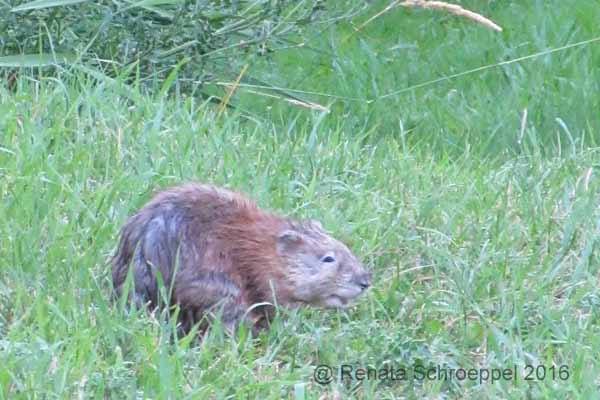As Fall moves the evening hours earlier, and the migratory birds begin their migration, the evening pond watching moves toward the muskrats. Muskrat watching is not a sensational experience, like watching eagles bank, or hawks dive. The muskrat isn’t impressive like a bear or cougar. Our muskrats are near-sighted, hard-of-hearing, and have a poor sense of smell. In short, they are just about perfect to watch if you stand still in the day’s fading light, and follow the wake in the water to the muskrat.

I like muskrat watching – and I have the tight, glacial silt and clay soil around the pond that let’s me regard their tunneling calmly. Our pond in South Dakota was in sandy clay, and a single tunneling muskrat could drain it, so the muskrat was the enemy. Here the tunnels are only a problem when they collapse and create stumbling hazards.
Havahart, known for their traps, has a webpage on muskrats – appropriate, since they are one of the most trapped animals in history. In southern states, some served them up as “swamp rabbit”. As a rodent, they are relatives of the rabbit, but one of my cats believed they were just big voles. Here, they eat crayfish, snails and vegetation. The wagging tail helps propel them through the water, where the head and back both show as they swim.
I understand the trappers – but being able to watch them swim around the pond has a non-cash value to me. Montana’s FWAP has a good website about them.
Leave a comment